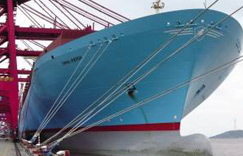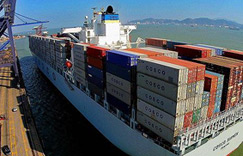-
What is the difference between DAP and CIF?1. DAP is applicable to any mode of transportation, and CIF is only applicable to sea transportation. The other differences between the two are:
DAP-is the actual delivery, and for the seller, the costs and risks borne by the seller have increased-the freight in addition to the freight from the port of departure (or the place of departure) to the port of destination, but also from the port of destination to the customer The freight for the designated pick-up location, and the risk of loss of goods that may occur during this process.
CIF is a symbolic delivery, that is, as long as the seller loads the goods on the ship at the port of departure, the delivery obligation is fulfilled; the moment the goods cross the ship’s rail at the port of shipment, the risk of the goods is transferred to the buyer and the freight As long as you pay to the port of destination, there is of course the insurance premium, which is just a little bit.
2. The typical symbolic delivery of the CIF contract, that is, the seller delivers on a voucher and the buyer pays on a voucher. As long as the documents submitted by the seller are complete and correct, even if the goods are lost in transit, the buyer still needs to pay and cannot refuse to pay. It is Group C in international trade (main freight has been paid)
DAP is new in incoterm2010, replacing DAF, DES, DDU, DAP: destination delivery (unloaded) and another DAT: destination delivery (cargo has been unloaded), belonging to group D (arrival) in international trade, Those who have done DDU before will know what this is about.
-
What do ETD, ETA, ATD, ATA mean?
ETD is the acronym for Estimated Time of Departure, which means estimated time of departure and estimated time of departure.
ETA is the acronym for Estimated Time of Arrival, which means estimated time of arrival and estimated time of arrival.
ATD is the acronym for Actual Time of Departure, which means actual departure time, actual departure time, and actual departure time.
ATA is the acronym for Actual Time of Arrival, meaning actual arrival time and actual arrival time.
-
What does it mean that the weight-to-volume ratio of air freight is large?Air freight is calculated in kilograms, and the weight-to-volume ratio of air freight is larger. The calculation formula is volume X 167 and weight, which is larger according to which quantity to calculate air freight, for example: 1CBM 200KG cargo, 1X167=167<200, calculated by 200KG Air freight
-
What is the random document for air cargo?There will be a random document for goods transported by air without a ticket. This is when the airline sends a copy of the air waybill as a random document, but we recommend that the more important documents are not sent together randomly. If it is lost, the airline company will not Responsible. All accompanying documents for air transportation are provided by the shipping customer.
-
How is air freight calculated?In the case of international freight, the air freight is calculated by weight, which is usually calculated in units of ten kilograms, and then calculated in our renminbi
-
What is the all-water transportation method?The all-water transportation method is simply a method of transportation by basic port. In simple terms, the entire transportation process is carried out by sea transportation
-
What are the relevant freight rates for U.S. routes?The relevant freight rates for U.S. routes include the ocean freight price, plus the destination port pickup fee, Shanghai Port additional fees, and related U.S. anti-terrorism document fees







